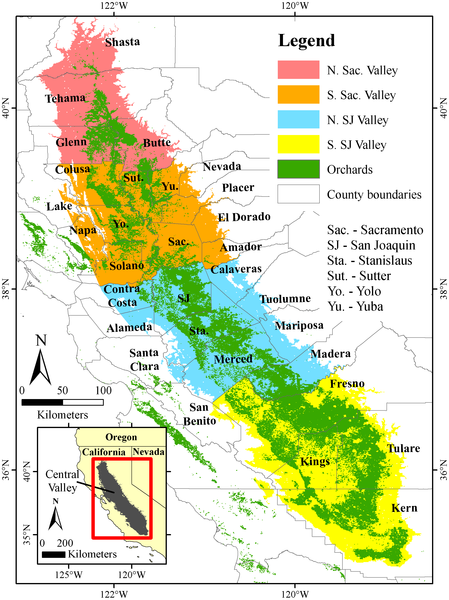Scientists in Hangzhou joined residents and tourists across China and India in observing the longest total solar eclipse in a century - and probably the most-viewed one ever. The moon's shadow traced a path across the world's two most populous countries for five minutes and 36 seconds, a treat for scientists and spectators alike.
"We saw it! The clouds kept getting thinner, and we even had a pretty good-sized hole in the clouds for the five minutes of totality," reported Expedition Leader Jay Pasachoff, Field Memorial Professor of Astronomy at Williams and chair of the International Astronomical Union's Working Group on Solar Eclipses, at an observatory near Hangzhou, China as part of the Williams College Eclipse Expedition.
If global warming projections hold up, tree crops that rely on the 'winter chill' in California's Central Valley could be in peril, say researchers in a new study. If you aren't aware, California's Central Valley fields produce 25 percent of America’s table food, which seems like a big responsibility for a state that is below Romania in world standing in the eyes of financiers who gauge whether or not a government can pay its bills.
The study is the first to map winter chill projections for all of California, which is home to nearly 3 million acres of fruit and nut trees that require chilling. The combined production value of these crops was $7.8 billion in 2007, according to the California Department of Food and Agriculture.
A new study conducted by researchers at the National Institute of Mental Health (NIMH) and Georgia State University looked at psychiatrically healthy Americans ages 9 to 17 to determine what happens in the brains of preteens and teens at a time of significant change in social behavior.
The youths looked at photos of peers and rated their interest in interacting with each one. Then they underwent a brain scan while reviewing the pictures and rated how much each young person in the picture might want to interact with them in return. The youths were told they would be matched with a peer for a chat after the scan.
The three-spine stickleback, tiny fish that thrive in oceans and in fresh water, appear to be the same yet ecologists are finding that they are actually a diverse collection of very specialized individuals. Understanding the ecological causes and consequences of such ecological variation is the goal of a group of scientists meeting at the National Institute for Mathematical and Biological Synthesis (NIMBioS) at the University of Tennessee, Knoxville, July 27-29.
Feeling stressed? The scent of a lemon or any other fragrant plants will help you feel better, say scientists in Japan who report the first scientific evidence that inhaling certain fragrances alters gene activity(!) and blood chemistry in ways that can reduce stress levels.
Their study appears in the Journal of Agricultural and Food Chemistry.
People have inhaled the scent of certain plants since ancient times to help reduce stress, fight inflammation and depression, and induce sleep. Aromatherapy, the use of fragrant plant oils to improve mood and health, is a popular form of alternative medicine and linalool is one of the most widely used substances to soothe away emotional stress, the authors say.
Researchers from the University of Cincinnati find the forest and water conservation practices of the The ancient Mayans had concerns about forest and water conservation practices 3,000 years ago, according to paleoethnobotanist(1) David Lentz of the University of Cincinnati, who has concluded that not only did the Maya people practice forest management but when they abandoned their forest conservation practices it led to their eventual doom.
 Opioid Addicts Are Less Likely To Use Legal Opioids At The End Of Their Lives
Opioid Addicts Are Less Likely To Use Legal Opioids At The End Of Their Lives More Like Lizards: Claim That T. Rex Was As Smart As Monkeys Refuted
More Like Lizards: Claim That T. Rex Was As Smart As Monkeys Refuted Study: Caloric Restriction In Humans And Aging
Study: Caloric Restriction In Humans And Aging Science Podcast Or Perish?
Science Podcast Or Perish?









